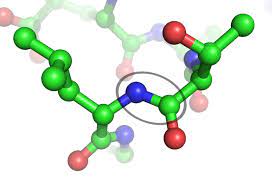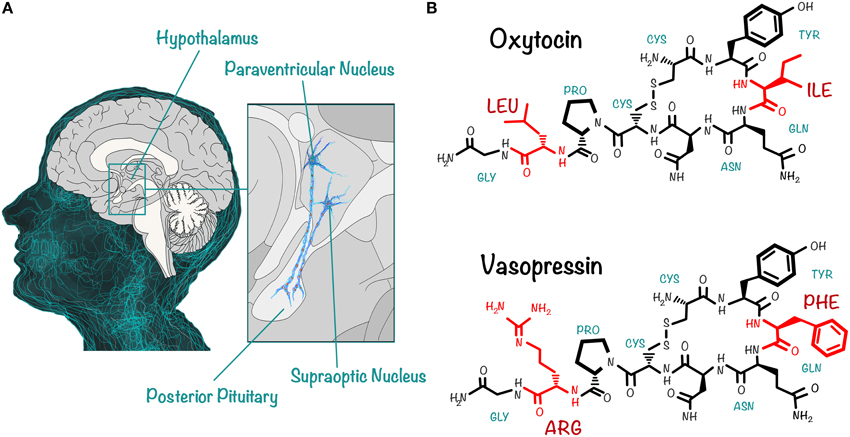Peptides have biological function in the human body and needed for various activities. Here we are going to discuss all possible prospects of peptide bond formation.
Protein is a life-sustainable complex. There is no other compound in the body that contains as much nitrogen as is present in the protein. Generally, a protein compound is composed of H, O, N, C, and S. The word protein is the greek word PROTAS which means Digested.
Proteins were first described by the Dutch chemist Gerardus Johannes Mulder. This article will give a brief about peptide bond formation. The peptide bond has got another name called the Isopeptide bond.

Image Credit- Wikipedia
The percentage of protein present in healthy adult males is 14%. The protein is present in Muscle Tissue, Teeth and Bones. Generally, the peptide bonds are formed in the ribosomes in the cell due to protein synthesis.
Read more about Peptide Bond vs Phosphodiester Bond
What is peptide bond formation?
The formation of peptide bond is one of the important process in cell .There are 100s of peptides in body with different functions.
Peptides are short chains of different amino acids. The bonds between them are known as a peptide bonds. The Peptide bond is also known as Amide bond.
Peptide Bond has two functional groups- 1) Carboxylic group 2) Amino group. Peptides are present in every cell and have a significant role in the Human Body. The amide link is called Peptide. Amino Acids are linked together based on a sequence encoded in DNA. No two proteins are identical in terms of structure and function. Even if the amino acids are present in different proteins, the sequence of amino acids in Polypeptide differs; this makes protein chemically diverse.
What catalyzes Peptide bond formation?
The formation of the peptide bond is catalyzed by peptidyl transferase, it is an RNA- based enzyme.
The proteins are synthesized in ribosomes of the cells. The peptide bond formation is is in between amino acids of P site and A site of a ribosome. When one amino acid combines the carboxyl group of another amino acid, a peptide bond is formed. Proteins should be taken in one’s diet as the protein food helps in solid muscle building and sharp eyesight.
Where does peptide bond formation occur?
The well known answer for synthesis of protein in cell is Ribosome. Hence peptide bond formation also occurs in Ribosomes.
The word Ribosome is also known as Protein factories. These are the main sites of protein synthesis. With the help of the enzyme peptidyl transferase the peptide bond formation is catalyzed. The process of two bringing TRNAs nearby will result in formation of peptide bond with the help of RNA.( also known as Ribozyme)
Peptide bond formation steps:
A peptide bond bonds together in between two amino acids through dehydration.
Degradation of protein into smaller fragments by following steps-
Liberation of Polypeptides
The proteins need to be hydrolyzed into polypeptide units by the presence of Urea/Guanidine HCl
Number of polypeptides
Dansyl Chloride is added to the protein, it specifically binds to n-terminal amino acids to form dansyl peptide.
Breakdown of the polypeptide into fragments-
polypeptides are degraded into smaller dipeptides by two methods-
Chemical Cleavage
This type of cleavage helps in the formation of peptides on hydrolysis like- Cyanogen Bromide(CNBr).
Enzymatic Cleavage
This method is commonly used to hydrolyze the peptide bond containing Lysin or Arginine. Trypsin, Chymotrypsin, pepsin, cleaves the peptide bond.
Types Of Peptides:
- There are three different peptides:-
- Oligopeptides
- The compound formed from less than and equal to 10 amino acids is called Oligopeptide. Example- Ceruletide.
- Polypeptides
- Polypeptide compound formed from more than ten amino acids. Some examples are Insulin and growth hormones. A single long chain of a polypeptide is called simple protein.
- Dipeptides
- Two amino acids bonded together is called a dipeptide. For example- artificial sweetener consists of two amino acids, namely aspartic acid and phenylalanine.
- Tripeptides– Examples- Glutathione.
- It acts as an antioxidant and is necessary for DNA and protein synthesis cell proliferation.
- Polypeptide– Ex- Insulin
- Oligopeptides and polypeptides are joined by linkages like disulfide linkage build peptide bonds.
Different classes of Peptides-
Milk Protein: Milk proteins act as an enzyme, and it is necessary for the breakdown of digestive enzymes (Cassin). The enzyme that breaks the proteins is called Proteinase.
Peptones: These are derived from animal milk by proteolytic digestion. Peptones are essential for nutrient media preparation. There are some types of peptides like Glutathione, Nisin, Lysine. Ex- Beef, Broccoli, Spinach, Chicken, Potatoes, Tomatoes, Oranges are rich in glutathione. Several strains of streptococcus lactis form nisin.
Characteristics Of Peptide Bonds-
Structure Of Peptide-
- CO-NH bond is called a peptide bond. It is a covalent bond. The Peptide is a three-dimensional structure. U.V. absorption bands and I.R. gives Functionality (Functional Groups). The primary purpose of the I.R. linkage is to identify Amide Linkage.
- FISCHER AND HOFL MEISTER– They suggested that amino acids in proteins are joined by linear fashion by a peptide linkage. I.R. spectra of the Peptide have shown that bands near 3300 -3100 cm inverse are the characteristic N.H. stretching (N-H) of secondary amines.
- U.V.: Spectra of peptides -Proteins show absorption in the 180-200nm region.
- X-RAY diffraction studies: It reveals the bond length and bond angles likewise.
- The Peptide structure is to be found first hydrolyzed to its constituent amino acids, separated, and identified. Ex- When glycine and Alanine link together, they release water. It need not be the same in all amino acids, and it can be different too. The next step is significant for determining the sequence of various amino acids constituting the Polypeptide.
Biologically Important Peptides-
Some biologically important peptides are –
Neuropeptides act as critical messengers in Neurosecretory cells like Oxytocin, Vasopressin.
1) OXYTOCIN– Oxytocin is also known as Love Drug. It is a non-peptide and contains nine alpha-amino acids. This hormone is needed chiefly in Women. Oxytocin is a peptide, and it is generated in the brain. Oxytocin plays an essential role in Reproduction. Oxytocin stimulates uterine contraction before delivery.
2) VASOPRESSIN– It is also a Nano peptide and contains nine alpha-amino acids. This is secreted from the Pituitary gland, and helps the kidney to retain water from Urine.
3) Parvocellular neurons synthesize corticotropin-releasing factor(CRF), Thyrotropin-releasing hormone, Gonadotropin-releasing hormone(GnRH).
4) Gastrointestinal Tract peptides– GASTRIN-(10 amino acids)- It helps in the secretion of Hydrochloric acid in the stomach.
5) GLUCAGON– (10 amino acids)- Pancreatic hormone involved in glucose metabolism. It increases blood pressure and antidiuretic hormone; Sensory pathways mediate vasopressin release. Vasopressin synthesized the hypothalamus and is produced in the posterior pituitary gland. Both men and women produce vasopressin.

Image credit-WIKIMEDIA
Peptide bond formation mechanism in amino acids-
The peptide bond is formed when the carboxylic group of one molecule reacts with the amino group of the other molecule. The reaction is continued by Hydrolysis, which removes water, and a peptide bond is formed. The release in water will form an amide bond and is essential for removing toxins. Peptide bond formation is the essential step for formation. This type of reaction is known as a condensation reaction.
The condensation of the acidic and primary groups by eliminating water is called peptide linkage. Peptide linkage has a planar configuration. The peptide formation requires a lot of energy that is an endergonic reaction. A variety of peptides are derived from foods during digestion. They act on Growth factors, Hormone, Antimicrobial Agents and Antioxidants.

IMAGE CREDIT–WIKIMEDIA
Is peptide bond formation spontaneous?
There are wide ranges of proteins in the world. They are simple proteins, globular proteins, and conjugated proteins. They exist because of the initial formation of the peptide bond.
The peptide bond formation is spontaneous, but the process is slow, forming and breaking peptide bonds. In nature, there are three hundred amino acids. Among them, only 20 amino acids are used by the proteins. The amino acids bond is a solid covalent bond known as an amide bond. As amino acids are added, the generated bond is a polypeptide. Sangar’s test determines the N-Terminal.
There are wide ranges of proteins in the world. They are simple proteins, globular proteins, and conjugated proteins. They exist because of the initial formation of the peptide bond. The ribosome catalyzes the peptide bond formation because it is the unit for protein synthesis. The peptide bonds can even be denatured or degraded. The method used for degradation is Hydrolysis.
In Hydrolysis, the Polypeptide is broken into small fragments. The protein degradation is prolonged and possible by some enzymes like peptidases. The peptide bond formation is present in all proteins and helps bind amino acids into chains. A Biuret test is one of the necessary tests for identifying a peptide bond.
- Lewis Structures: Facts You Must Know
- H2SO4 + NaOH: A Powerful Chemical Reaction Unveiled
- What is Valence Electrons:7 Facts Most Beginner’s Don’t Know
- Sodium Carbonate: Understanding Its Uses, Benefits, and Safety
- What is Electronegativity:7 Facts Most Beginner’s Don’t Know
- Electron Configuration:11 Things Most Beginner’s Don’t Know
Also Read:
